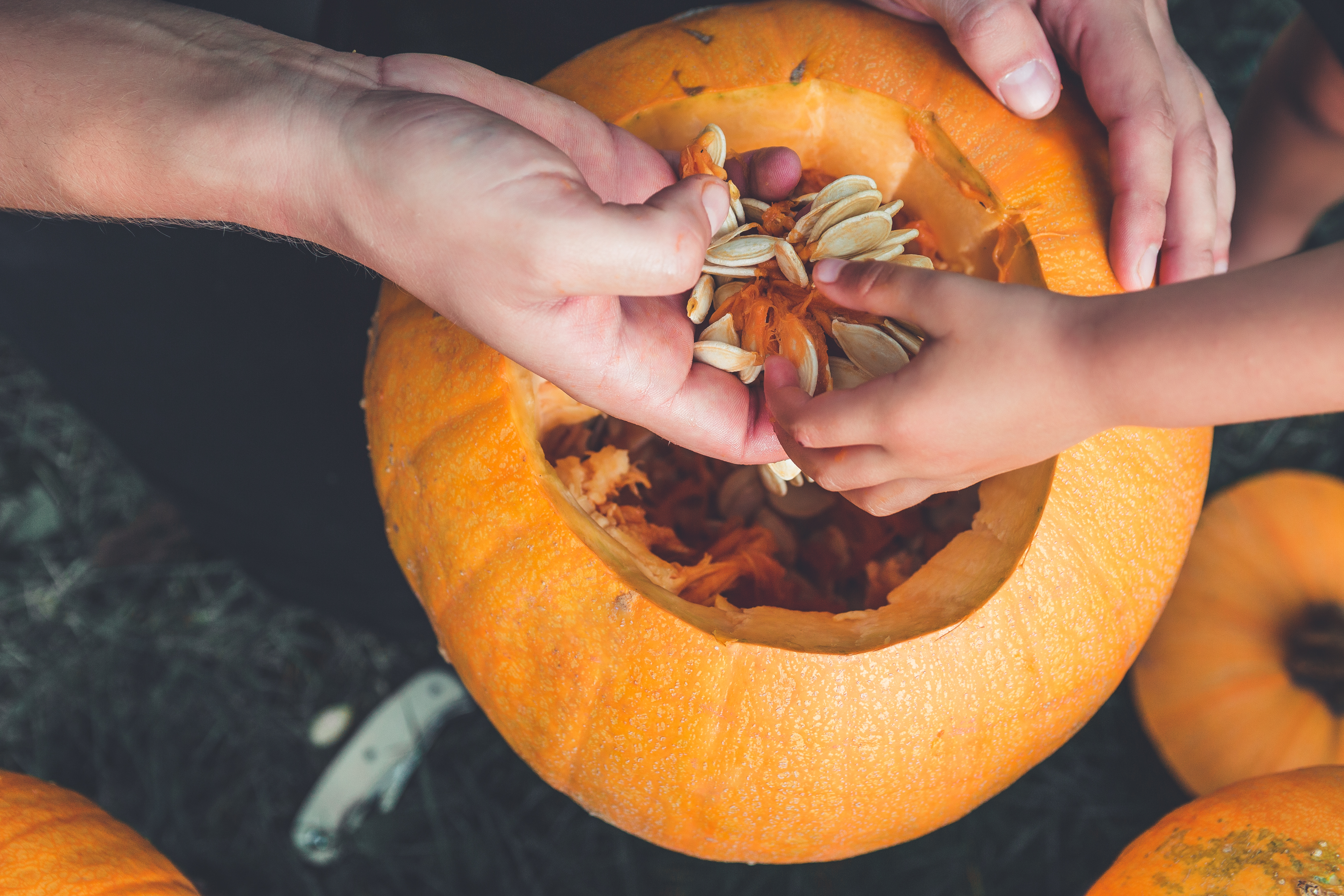Saving Pumpkin Seeds: It's Complicated

Now that you have carved your jack-o’-lantern, should you save the seeds to grow next year’s pumpkins? If there were a vegetable comedy about garden pumpkins making seeds, it would have to be titled It’s Complicated.
Saving pumpkin seeds that will produce quality and true-to-variety pumpkins for next year’s garden is not as simple as scooping them out of your jack-o’-lantern and setting them out to dry.
If you purchased your pumpkin from a farmers market or a grocery store, you usually won’t know if it is an heirloom or open-pollinated variety, or whether it is a hybrid variety whose seeds won’t produce the same type of pumpkin in the next generation. Seeds from your jack-o’-lantern will usually sprout and grow into plants, but you won’t know if the pumpkins they produce will be worthwhile until you’ve put in months of effort in the garden.
Even if you know your pumpkin is an heirloom or open-pollinated variety, its seeds may not produce the same type of pumpkins in the next generation. Pumpkins easily cross-pollinate with other pumpkins and squash. There are at least three species of cucurbits that produce fruits that we call pumpkins, and each of these species also produces other types of squash, ranging from summer squash and zucchini to turban squash. In rare cases, Cucurbita moschata (winter squash including butternut and also pumpkin varieties) also crosses with other species of squash and pumpkin.
Cross pollination within these species, or in the case of Cucurbita moshata with other species, will not affect the fruits in the current or original generation (plants grown from seeds you purchased), only the next generation (plants grown from seeds you saved from pumpkins purchased or harvested from your garden).
If you grew your own pumpkin, had only one heirloom or open-pollinated variety of pumpkin in bloom at a time in your garden, and there were no other squash or pumpkins blooming nearby, the seeds may be worth saving as many are likely to produce the same type of pumpkins in the next generation. To ensure true-to-variety pumpkins in the next generation, 1/4 to 1/2 mile separation is needed from other pumpkins and squash, or flowers must be hand pollinated just as the female flower opens, with further insect pollination prevented, such as by tying off hand-pollinated flowers in small paper bags.
Otherwise, GardenZeus recommends that you purchase pumpkin seeds from a quality seed source, such as our friends at Botanical Interests.